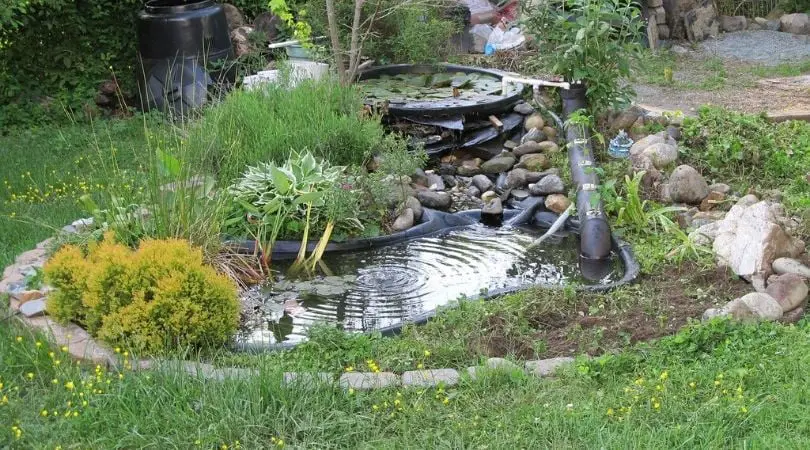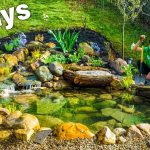Welcome to our comprehensive guide on how to build a self-sustaining pond! Creating a pond that can thrive on its own is not only a beautiful addition to your landscape, but it also provides a natural habitat for wildlife and helps maintain a healthy ecosystem. In this article, we will walk you through the steps to build a self-sustaining pond that will require minimal maintenance once established.

Credit: www.outdoordesign.com.au
Step 1: Planning
The first step in building a self-sustaining pond is careful planning. Consider the size and location of your pond, taking into account factors such as sunlight exposure, proximity to trees, and access to a water source. Determine the shape and depth of the pond based on your preferences and the needs of the plants and wildlife you plan to include.
Step 2: Digging the Pond
Once you have planned out the location and size of your pond, it’s time to start digging. Use a shovel or a small excavator to dig out the shape of the pond, making sure to create varying depths to accommodate different types of aquatic plants and wildlife. Create shelves around the edges of the pond to provide a transition from land to water.
Step 3: Adding a Liner
After digging the pond, line the bottom and sides with a pond liner to prevent water from seeping into the surrounding soil. Choose a durable liner that is resistant to punctures and UV damage. Make sure to secure the liner in place and smooth out any wrinkles to ensure a proper fit.

Credit: www.youtube.com
Step 4: Installing a Filtration System
For a self-sustaining pond, it’s essential to have a filtration system in place to maintain water quality and clarity. Consider installing a biological filter that uses beneficial bacteria to break down organic waste and a mechanical filter to remove debris and algae. A pump and aeration system can also help circulate and oxygenate the water.
Step 5: Adding Plants
Plants play a crucial role in a self-sustaining pond by filtering the water, providing oxygen, and creating habitats for wildlife. Choose a variety of aquatic plants, including submerged, floating, and marginal plants, to create a balanced ecosystem. Make sure to plant native species that are well-suited to your climate and water conditions.
Step 6: Introducing Fish and Wildlife
Adding fish and wildlife to your pond can help control algae and mosquito populations while adding beauty and interest to the ecosystem. Consider stocking your pond with fish such as koi or goldfish, as well as beneficial aquatic insects like dragonflies and water beetles. Be mindful of the balance of predators and prey to maintain a healthy ecosystem.
Step 7: Monitoring and Maintenance
Once your self-sustaining pond is established, it’s essential to monitor water quality, plant growth, and wildlife populations regularly. Remove any debris, trim overgrown plants, and check the filtration system to ensure everything is functioning correctly. Avoid using chemical treatments that can disrupt the natural balance of the ecosystem.
Benefits of a Self-Sustaining Pond
Building a self-sustaining pond offers a wide range of benefits, both for you and the environment. A self-sustaining pond requires minimal maintenance once established, saving you time and effort in the long run. It creates a beautiful and tranquil space in your landscape, attracting wildlife and providing a natural habitat for plants and animals.
By building a self-sustaining pond, you can also help conserve water and reduce the need for chemical treatments and artificial fertilizers. The pond will naturally purify the water and support a diverse ecosystem that can thrive on its own. It’s a sustainable and eco-friendly addition to your property that will bring joy and beauty for years to come.
Conclusion
Building a self-sustaining pond is a rewarding project that allows you to create a thriving ecosystem in your own backyard. By following the steps outlined in this guide and maintaining a careful balance of plants, wildlife, and water quality, you can enjoy a beautiful and sustainable pond that will enhance your landscape and benefit the environment. Embrace the beauty of nature and create your self-sustaining pond today!




